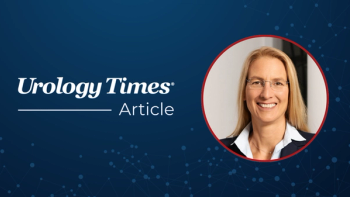
ISGF3 activation may inhibit tumor growth in clear cell RCC patients
Activating interferon stimulated gene factor 3 could be a new direction for treating clear cell renal cell carcinoma, according to a recent study.
Activating interferon stimulated gene factor 3 (ISGF3) could be a new direction for treating clear cell
“ISGF3 is a brake on tumor growth. If we can find a clever way to potently activate it, we might be able to slam the brake on kidney cancer progression. It’s a new target,” said study author Haifeng Yang, PhD, of Thomas Jefferson University, Philadelphia.
Scientists have known that von Hippel-Lindau (VHL) inactivation is the primary cause of clear cell RCC. And VHL inactivation results in hypoxia-inducible factor (HIF)2 alpha becoming constantly active, which drives tumorigenesis and is critical for tumor maintenance. What hasn’t been clear is how the inactivation of VHL interacts with secondary mutations in tumor suppressor genes.
In the last decade, tyrosine kinase inhibitors, specifically vascular endothelial growth factor receptor inhibitors, have been first-line therapies to treat RCC.
“Tyrosine kinase inhibitors work great in a third of patients. But most patients will relapse over time,” Dr. Yang said. “Now, immunotherapy is gaining momentum to become the new standard of care.”
Immunotherapy has been shown to elicit strong response in 20% to 40% of RCC patients, according to Dr. Yang.
Read:
“There is a large number of patients who cannot benefit from either treatment. So, ISGF3 reactivation, either alone or in combination with current therapies, has the potential to significantly improve patient outcomes,” Dr. Yang said.
Dr. Yang and colleagues found VHL, PBRM1, KDM5C, SETD2, and BAP1 regulate ISGF3, a transcription factor that regulates the interferon signature, according to the study.
They found in a clear cell RCC mouse model that ISGF3 inactivation significantly increased tumor size, while boosting ISGF3 in human clear cell RCC cells significantly shrank the tumors.
Knocking out VHL in mouse kidneys even with fully activated HIF isn’t enough to generate clear cell RCC, the authors write.
“Only after combination with Pbrm1 or Bap1 conditional knockout can VHL loss lead to kidney tumors (
Next -
“Mutations in PBRM1 is 40% to 50%; mutations in SETD2 and BAP1 are around 15%; and mutations in KDM5C is 5% to 10%. So, the vast majority of the clear cell renal cell carcinoma patients have mutations in these genes, and the mechanism we identified is likely operating in them,” he said.
The finding is significant because PBRM1, KDM5C, SETD2, and BAP1 account for the bulk of secondary mutations in clear cell RCC, according to study author Stephen C. Peiper, MD, of Thomas Jefferson University.
“Each gene has its own unique functions, and their mutations are associated with different risks to the patients. However, the fact that they all converge on ISGF3 hint that it might play a central role in this disease, and it could be exploited for treatment,” Dr. Peiper said.
The next step is to identify an agent that efficiently and safely activates ISGF3 in clear cell RCC patients, which could be years down the road, according to Dr. Yang.
Also see:
Pharmaceutical companies are pursuing agonists that activate a protein called the Stimulator of Interferon Genes, or STING.
“Those drugs have great potential to activate the target that we had identified. It could turn out to be very useful in treating kidney cancer. We have to work together with pharmaceutical companies to find out,” Dr. Yang said.
Approved kidney cancer treatment options have grown to more than a dozen new therapies and combinations in the last decade, according to study author Robert G. Uzzo, MD, of Fox Chase Cancer Center and Temple University, Philadelphia.
“These new treatments have improved response rates from 15% to nearly 70% and increased overall survival nearly four-fold,” Dr. Uzzo said. “None of these treatments would be possible without our rapidly increasing knowledge regarding the mechanisms involved at the gene and protein level. These data continue to advance the frontier of what we know regarding the cellular events responsible for renal cell carcinoma and how to interrupt them with novel and emerging therapies.”
Newsletter
Stay current with the latest urology news and practice-changing insights — sign up now for the essential updates every urologist needs.


















